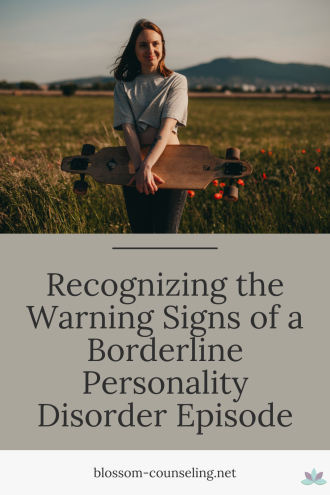
Borderline Personality Disorder (BPD) is a complex mental health condition characterized by intense emotions, unstable relationships, and an ever-changing self-image. For those living with BPD or close to someone who is, understanding the warning signs of an episode can provide critical insight into managing this challenging disorder. Recognizing these signs early can help mitigate their impact and improve communication and coping strategies.
1. Intense Emotional Swings
People with BPD often experience rapid shifts in mood. These can range from extreme happiness to intense despair within hours or even minutes. These emotional roller coasters are not just typical mood swings; they are intense and can feel overwhelming to the person experiencing them.
2. Feelings of Emptiness
A profound and persistent feeling of emptiness is a common sign in those with BPD. This isn’t just about feeling lonely or bored; it’s a deeper sense of dissatisfaction with life and oneself, which can suddenly lead someone to feel incomplete or void of purpose.
3. Explosive Anger
While we all get angry, individuals with BPD may struggle with very intense, fierce anger that can escalate quickly. This type of anger is often disproportionate to the situation and can result in turbulent relationships with others. Recognizing when anger is beginning to boil over can be a crucial step in managing a BPD episode.
4. Paranoid Thoughts or Dissociative Feelings
During times of stress, individuals with BPD might experience paranoia or dissociative symptoms. They may feel disconnected from reality or have odd perceptions that people are out to get them. These symptoms can be particularly distressing and might cause a person to withdraw socially as they grapple with what feels like a distortion of reality.
5. Impulsive, Self-Destructive Behaviors
Impulsivity is a hallmark of BPD, particularly in stressful situations. This might manifest as reckless driving, binge eating, substance abuse, or risky sexual behavior. Such actions often serve as a temporary escape from overwhelming emotions but typically bring about a host of additional problems.
6. Fear of Abandonment
One of the most prominent features of BPD is the intense fear of abandonment, whether real or perceived. Plans getting canceled or someone being late can trigger an extreme reaction from someone with BPD, who may immediately jump to conclusions that they are being rejected or left behind.
Understanding and Managing BPD Episodes
Living with BPD involves navigating these episodes, which can be unpredictable and challenging. However, by understanding the warning signs, individuals and their loved ones can develop strategies to manage these symptoms effectively. It’s important to communicate openly about these experiences and to seek professional guidance and therapy aimed at offering support and teaching coping mechanisms.
In managing BPD, therapy can be an invaluable resource. Techniques such as Dialectical Behavior Therapy (DBT) provide tools for regulating emotions and improving relationships. Mindfulness and grounding exercises can also help manage dissociation and paranoia. Ultimately, while BPD is a lifelong condition, with the right strategies and support, individuals can lead fulfilling lives.
For those grappling with BPD, understanding the onset of an episode can empower them to take proactive steps toward stabilization. Similarly, for friends and family, recognizing these signs can be the first step in providing meaningful support and understanding. In the landscape of mental health, knowledge truly is power, and embracing this understanding fosters deeper connections and healing.
Our team of compassionate therapists is here to help you find the support you need. We believe in a holistic approach, treating your mind, body, and spirit. With a blend of traditional and alternative therapies, we tailor your experience to meet your unique needs. At Blossom, we create a non-judgmental space where you can be your authentic self. Our goal is to empower you, amplify your strengths, and help you create lasting change. Together, we’ll navigate life’s challenges and help you bloom, grow, blossom! You deserve to become the best version of you.




